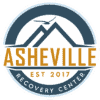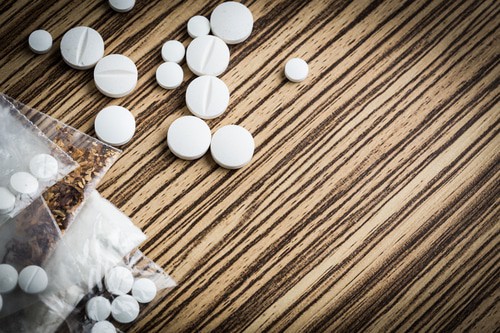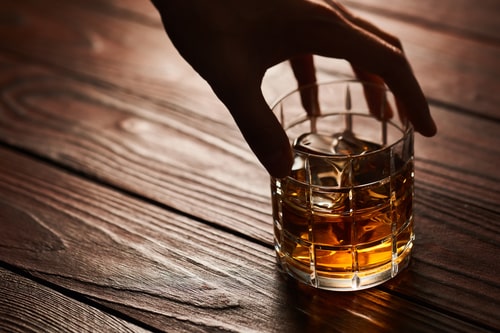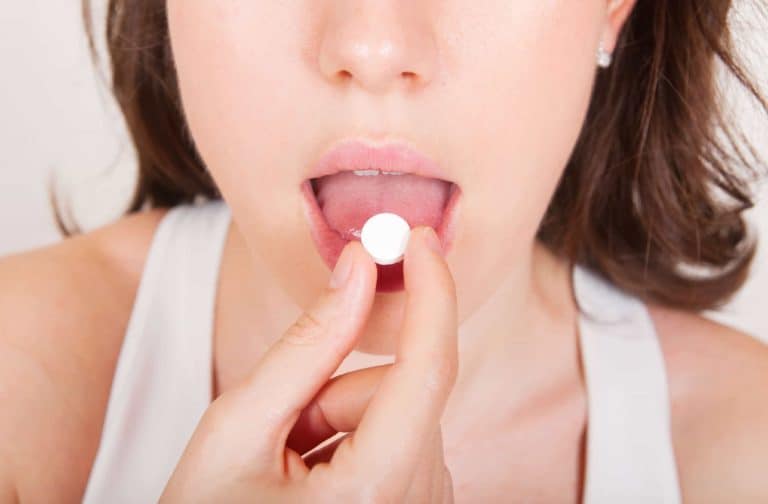Over 12,000 adolescents try a new substance every day. Read our parent guide to alcohol and drug intervention tailored specifically for your teen.
Teen Identity Development
The stage of adolescence is considered between the ages of 13 and 17. These four years are critical to lay a foundation towards being a responsible and independent young adult.
Identity development in adolescence is influenced by a multitude of experiences and relationships. This is a time in life when youngsters look primarily outside themselves to form their values and choices; therefore, social and emotional development in adolescence is mostly based on interactions with peers and adults.
With an increasing ability to make choices based on options and their consequences, those approaching young adulthood begin to build skills towards self-efficiency and, naturally, seek more independence.
But what this age group is often lacking is the life experience to make good choices, so they usually depend on friends and adults to set expectations, act as an example, and provide guidance.
Unfortunately, this is also the time period when being a good parent is the most challenging. Your child is growing up, whether you like it or not, and for most teens, they desire to spend less time with their family and more time with friends to begin to make sense of the world and their place in it.
Needing to stage a drug intervention but you aren’t sure where to turn? Addiction treatment is in reach through our partial hospitalization program. Dial (828) 518-6996 to speak with an Asheville Recovery Center representative to begin your journey.
How does drug use affect the adolescence stage of human development?
Teens are the most susceptible age group to be exposed to and try alcohol and drugs; any habits formed during these impressionable years are likely to continue and increase into young adulthood.
Each year, the Substance Abuse and Mental Health Services Administration (SAMHSA) conducts a national survey. The results from 2019 provide a distribution of the initiation of drug use by type of drug and by age group. An average of 12,220 adolescents tried a new substance every day in the year 2019. Below is the breakdown per drug type.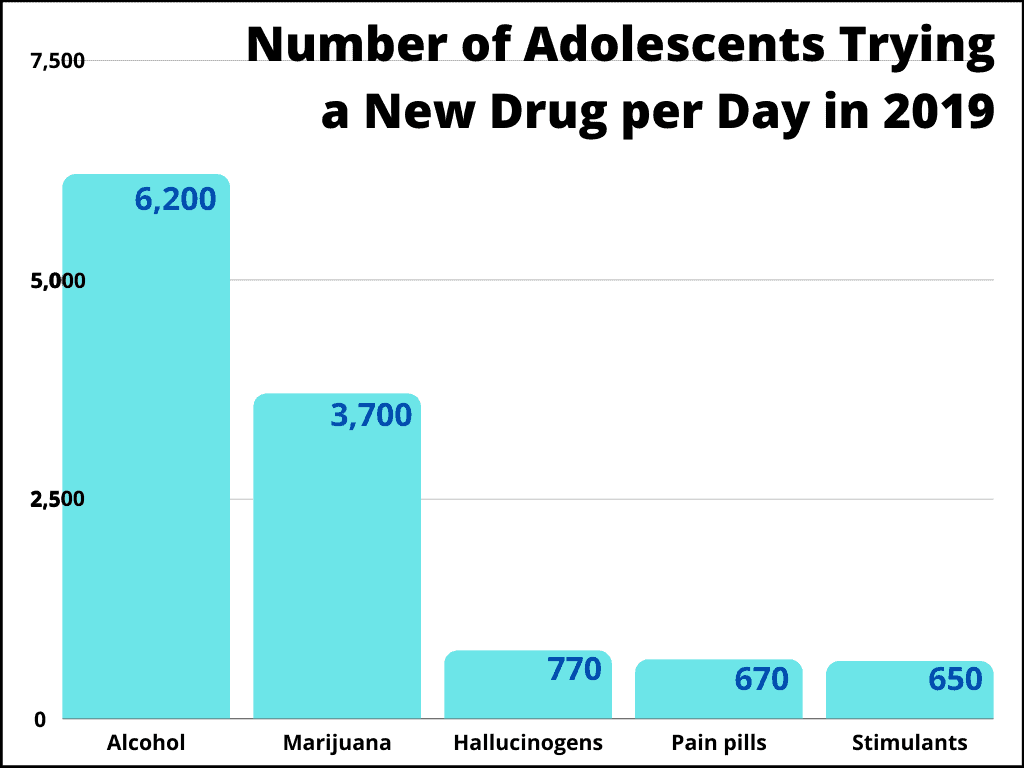
Unfortunately, nearly 62 percent of these adolescents obtain substances such as alcohol, prescription pain pills (Vicodin and OxyContin), and prescription stimulants (Ritalin and Adderall) from their very own homes.
Talk to your teen early about the dangers of drugs and alcohol — sooner than you’d probably prefer.
Possibly, the most alarming aspect of alcohol and drug use among teens is its effect on brain development.
Which part of the brain develops last in adolescence?
The prefrontal cortex.
The prefrontal cortex manages the production of gamma-aminobutyric acid (GABA). This brain chemical dictates levels of dopamine and serotonin which both work together to regulate mood. It just so happens that the majority of substances (especially alcohol) target the GABA neurotransmitter.
When the reward center is activated by this mood-elevating neurotransmitter, the body will equate positive results with the substance that triggered it. This spike may lead to compulsive behaviors that cause further dopamine surges in the case of intoxicating drugs, whether prescription or recreational.
The bottom line:
Alcohol and drug use confuses mood-regulating chemicals which, in adolescence, have yet to be fully developed.
Research published in the Journal of Neuropsychiatric Disease and Treatment identifies eight brain functions the prefrontal cortex solidifies during adolescence:
- The ability to balance short-term rewards with long-term goals
- Considering the future and making predictions
- Focusing attention
- Organizing thoughts and problem-solving
- Impulse control and delaying gratification
- Forming strategies and planning
- Management of intense emotions
- Inhibiting inappropriate behavior and initiating appropriate behavior
- Shifting and adjusting behavior when situations change
- Foreseeing and weighing possible consequences of behavior
As you can see, the appropriate development of the above list of brain functions is critical to adulthood and living a quality life. This is why early drug and alcohol intervention for teens is so important.
What is a family drug intervention?
The primary goal of an alcohol or drug intervention is to convince a loved one that their addiction is putting themselves and others at risk. The ultimate outcome is that the individual agrees to enter treatment.
Parents have the ability to force their teen into treatment, but the truth is, if your teen doesn’t want treatment, any efforts by rehab professionals will not stick.
It’s particularly important to realize that though you may force your teen into treatment where they are abstaining from the substance (because it is not readily available), there is still more work to do.
Your son or daughter needs a substance abuse intervention to realize what there is to lose and what there is to gain.
Substance use disorder interventions, especially for teens, certainly cannot be sporadic; timing is everything. Doing an intervention with an alcoholic or drug addict is not meant to be accomplished singlehandedly either.
There are many options in types of drug and alcohol use disorder interventions, but most importantly, each one should be carefully considered because not one size fits all.
If you aren’t sure how to do an intervention for drug abuse, keep reading.
What are the types of intervention?
Understanding the different types of drug intervention for your teen can be an excellent start when you feel so lost and helpless as a parent. There are four basic types of interventions which fall into different levels of intervention in substance abuse prevention efforts.
Ultimately, the first (and sometimes most effective) approach is to start small.
Simple Drug Intervention
A one-on-one conversation between you and your son or daughter can be a fairly effective method rather than pulling together a huge group of people that may seem intimidating.
Even a sibling, aunt or uncle, or grandparent can do this basic drug intervention — it really just depends on which single family member may be able to bring about change based on the nature of their relationship with your teen.
Classical Drug Intervention
For an intervention that will need more structured planning and more than one attendee, a classical intervention may be a more appropriate option. Prior to the drug intervention meeting, those who will be attending all meet together and discuss each person’s role.
This could be one meeting or multiple meetings, but they usually include education for the family members and is likely facilitated by a counselor, or otherwise known as a drug intervention specialist, who has very specific training in how to stage an intervention for an alcoholic or drug addict.
This ensures everyone understands how the intervention will flow and everyone in the drug intervention process feels supported.
Family System Drug Intervention
Sometimes it’s not just the addicted person that needs support; this is when a type of family intervention is best.
It’s not uncommon that families have other challenges not related to addiction such as historic conflict or co-dependence. Because this style of drug intervention looks at the family as a system, relationships between and among all members of a family as well as each members’ role or function are taken into consideration.
This approach is not solely focused on the treatment of addiction; the bonds among family members and how the household works is usually a prominent factor. Each member or smaller groups of family members are encouraged to participate in individual or family counseling or coaching prior to the intervention.
Crisis Drug Intervention
If your son or daughter has been using a substance for some time now, it could be a single occurrence that triggers more of an impromptu drug intervention. A single occurrence, whatever it may be, is a crisis because the individual may be endangering themselves or others. The need for rehab is typically made crystal clear to family members and often the addicted individual when a crisis occurs.
The immediate goal of crisis intervention is to reestablish the safety of everyone in the household, so this type of intervention may involved authorities such as emergency response or law enforcement officers. This may seem like a forceful approach; however, it could save a life, and rehab usually quickly follows.
What are the best addiction intervention models?
Most agree that confrontation is difficult no matter the situation. Communicating clearly without coming across as forceful is more challenging when everyone has an emotional investment and comes from a place of genuine love and concern.
Good intentions are always the foundation of intervention, but taking a look at different addiction intervention models may offer some guidance for how to go about the entire process.
There are four main evidence-based interventions for substance abuse: the Love First model, the invitational model, the Johnson model, and the ARISE model.
Love First Drug Intervention Model
With a focus on positivity and support, this model is based on the assumption that addiction is a medical problem that affects the brain, and any form of reasoning or negotiation will likely not make a difference. Instead, the power of love is the center of attention; though the individual is physically overtaken by a substance, the heart and soul of the person is still there and can be reached by a genuine display of love.
Typically, an intervention specialist is not involved in the process, and family and friends come together as a unit to express love and concern. The flexibility of this model is mostly due to the preferred designated number of people and setting taking into account the comfort of the individual.
Those in attendance typically prepare letters of support ahead of time to read during the meeting because most people are at a complete loss for what to say at an intervention for alcohol and drug use. Everyone is encouraged to ask the loved one to go to treatment, create a shared goal as a unified group, and make a commitment to support the individual throughout recovery.
The people in attendance are usually members of the individual’s tightest circle and those he or she trusts most. If this method seems inappropriate for your family, you may need to seek services for professional intervention in drug abuse.
Invitational Drug Intervention Model
If you feel an expression of love can’t do it alone and the family system intervention approach previously described sparked your interest, an invitational intervention model may be best for your family.
The main difference in this model as compared to others is that the intervention is not a surprise. It is also based on the premise that if the system changes, then behavior changes. Ultimately, the best way to change behavior is to provide education for all of those involved, so this model is considered one of the more therapeutic interventions for substance abuse.
A professional interventionist plans and delivers between 12 to 14 workshops to which all family members are invited, even the addicted individual. If they choose not to attend, then at least the rest of the family members are gaining stronger insight into the process of addiction intervention with the main goal of changing the environment and how the family system operates.
The hope is that the loved one will enter addiction treatment towards the end of the workshop series. Because this model is the least confrontational and most non-judgemental, it has been known to be successful with adolescents that showed consistent reluctance to recognize the problem.
In fact, a study published in the Journal of Substance Abuse Treatment shows that 71 percent of teens agreed to enter treatment after parents or family members attended 12 sessions.
If this model seems a little too passive for your teen, then a more direct approach may be best.
Direct Drug Intervention (the Johnson Model)
Originating in the 1960’s, the Johnson Model is a more confrontational and direct method and has been popularized by recent drug intervention TV shows. This approach is best if your teen is in denial and does not see how their drug use affects their environment, loved ones, and their personal potential in general.
This model involves a surprise drug intervention meeting, so your teen doesn’t expect it coming; however, those who will be present will meet with a specialist with a drug and alcohol intervention methods certification one or multiple times to make the plans.
But what do you say at a drug intervention?
These surprise interventions are typically scripted so that each family member can think through and prepare what they wish to say ahead of time. Because it may be difficult to articulate concerns on the fly, family members will write letters that they read aloud at the intervention. These letters often include details of specific events when they were negatively impacted by the individual’s drug use.
The family together (or each individual member) will express an ultimatum or heavy consequence if the individual does not seek treatment. Known as a tough-love approach, consequences can be pretty severe like kicking them out of the house, retracting financial support, or refusing any contact at all.
ARISE Drug Intervention Model
ARISE stands for “a relational sequence for engagement.” In plain English, it is more of a tiered method that utilizes techniques from the more direct and invitational approaches and also acknowledges the strength of the family system.
You may be wondering, “What are the steps of a drug intervention?”
The key difference in the ARISE model is that each step is planned meticulously using a strategic ordering of events, and no matter what step gets the individual to agree to treatment, all steps planned afterward do not occur. Essentially, once the person vocalizes “ok, I understand. I need to seek help,” all planned efforts stop.
A drug intervention counselor is especially critical for this intervention model to work because in order to execute a series of structured events, a facilitator is needed to make sure the plan is strictly followed, boundaries are enforced, consequences are explicitly communicated, and no secrets are kept.
Studies, such as one published in the American Journal of Drug and Alcohol Abuse, have shown that ARISE has an 83 percent success rate of getting a person to agree to enter treatment.
The individual is made aware of each planned meeting but not necessarily the strategy behind them. Once the person agrees, the entire family is heavily involved in every step of treatment and recovery.
After considering the various types of models of drug intervention, we hope this guide can help you make the best decision about how to approach your teen or young adult about their drug or alcohol use.
No matter what intervention method you choose for your family, there are some general tips for parents that can be applied to all intervention types.
What is some drug intervention advice for parents?
As a parent, how do you prepare for an intervention for drug and alcohol abuse? It’s certainly not easy and should never be done alone. Here are a few tips that work in preparing for any type of intervention.
Observe — keep an eye on grades, make note of their personal appearance, and know who their friends are and how often they change. A progressive decline in personal hygiene is a strong warning sign.
Keep a record — managing a journal of specific dates, occurrences, and order of events on a daily basis will help you put the pieces together whether that day or later when you seek help from a professional.
Poke around — it’s easy to look for visual clues without completely invading your teen’s privacy. Any suspicious materials or paraphernalia are simple to identify, especially if your son or daughter has progressed well into addiction. They will have standard hiding places, but with any habit, good or bad, it’s easy to get lazy and leave things lying around. Also, keep track of any prescription medications taken by anyone in the household. Count pills. Make sure everything is accounted for.
Secure support of others — authority figures in the household don’t always inherently share the exact same positions, and your teen will be the first to point this out when any speculations or accusations are made. If age-appropriate, make sure everyone in the home is on the same page. Blame is less likely to occur when everyone exercises transparency.
Acknowledge your own history — some teens may desire to experiment once or twice with various drugs, but if you have a history of addiction in your family, it’s more likely your teen is at risk.
Have reasonable goals — it’s all about baby steps. Decide an order to your goals from least invasive leading up to an official intervention. Sometimes a broader approach, such as standard, individual therapy, that’s not related specifically to drug use can go a long way.
Expect adverse reactions — there is no single drug talk; it is a series of conversations that build understanding overtime for both you and your teen. Consider the nature of how your teen processes information and makes even the smallest choices. Knowing how their brain works will assist you in getting them to listen.
The Bottom Line
No specific hard evidence will be stronger than a parental intuition that something is off. Merely expressing to your teen that you have noticed some changes should be a celebrated accomplishment.
Start small and work your way through the process with your teen. Keeping an open, honest, and direct conversation going is always an effective approach. Hopefully, these small efforts will help before the drug or alcohol use becomes a crisis. As the most qualified Western Carolina treatment center Asheville, North Carolina has to offer, we at Asheville Recovery Center are ready and eager to help.
Drug intervention treatment is just a phone call away. Call Asheville Recovery Center at (828) 518-6996 to inquire about our addiction treatment services.
